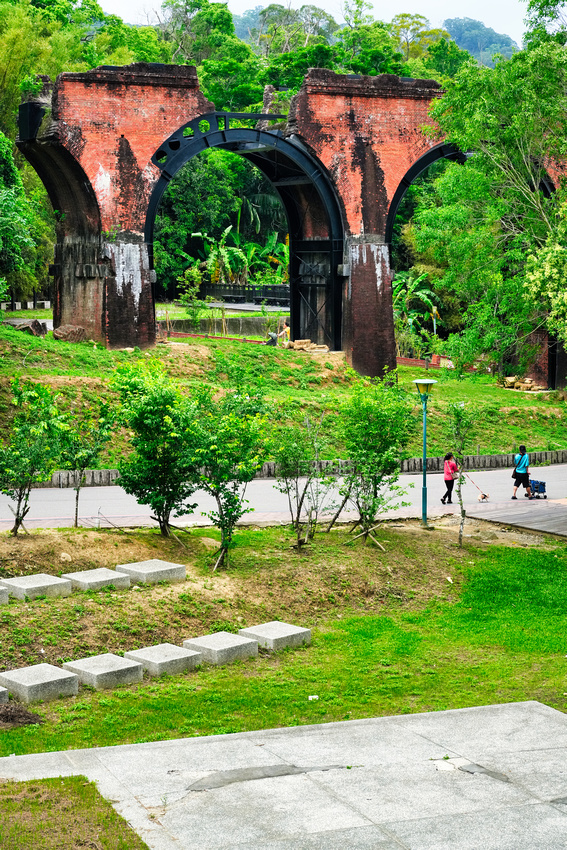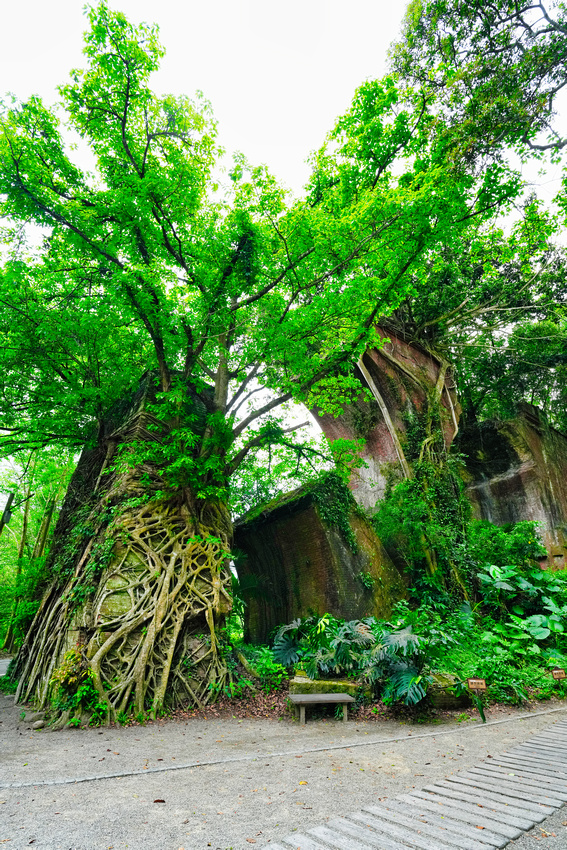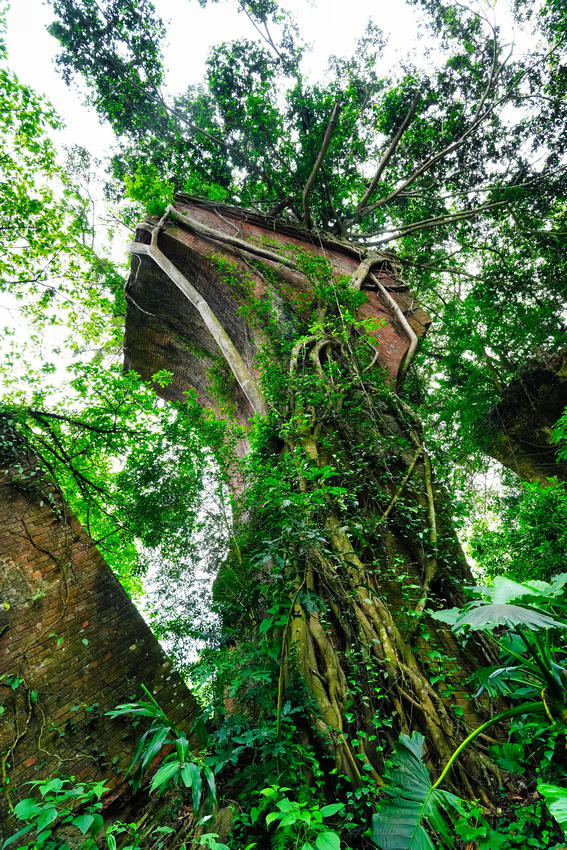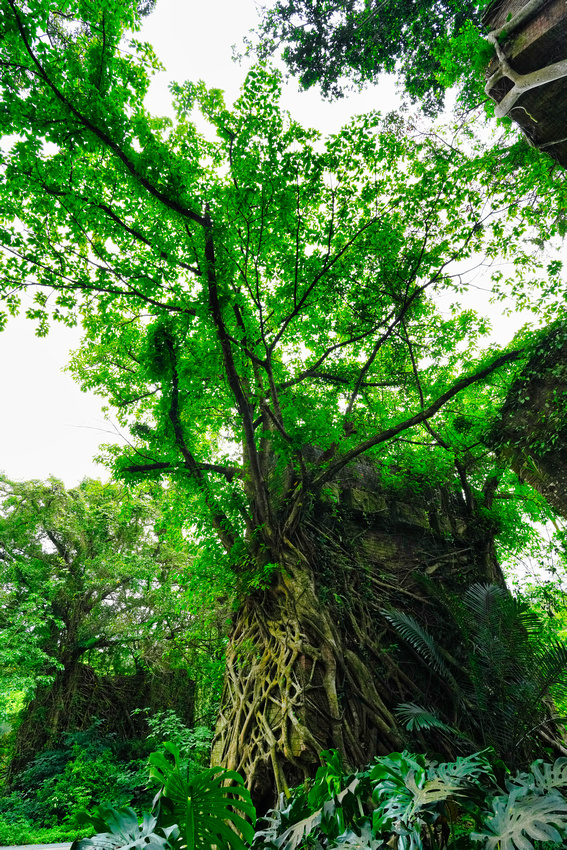Long Teng Abandoned Bridge for Water H2O ThursdayThe bridge was built in 1906 during Japanese rule and was named Gyotōhei kyō (魚藤坪橋). It was designed by the American civil engineers Theodore Cooper and C.C. Schneider for the colonial government. Both the bridge and nearby village (modern-day Longteng) were named Gyotōhei (魚藤坪) after a local plant Millettia pachycarpa (Chinese: 魚藤; pinyin: yúténg; Japanese pronunciation: gyotō) believed to be poisonous to fish; legends believed that a malevolent carp in a nearby lake was responsible for misfortune, and residents planted the shrub to counter the carp. The original design consists of a central steel truss flanked by multiple brick masonry arch approaches. The April 1935 Shinchiku-Taichū earthquake and subsequent aftershocks in July damaged the bridge beyond repair. Several masonry arches were cracked and the north and south ends of the truss became misaligned. A new iron bridge was built in 1938, 80 meters to the west of Longteng Bridge, and the central truss was dismantled once the new bridge opened. Longteng of the bridge's common name is from the name of Longteng Village and gained use after the Japanese handover of Taiwan. The 1999 921 earthquake caused one of the remaining piers to collapse and as a result, the county government decided to rededicate the bridge's remains as a monument to the two deadliest earthquakes in Taiwan's history. It was placed on the list of Taiwan's Cultural Heritage Assets on 25 November 2003
Linking Intelliblog Through my lens My Corner of the World Sunday Best
Thank you for dropping by
Keywords:
Abandoned,
Bridge,
Cultural,
decay,
Heritage,
Long Teng Old Bridge,
Old,
Taiwan,
Taizhong,
Urbex
Comments
Amazing photos of this beautiful monument to Nature's wrath. I this it's a great idea that the ruins have been made into a heritage monument as it makes the new generations aware of the history of the structure and the historical significance of the bridge in a more general context. Great photos, James!
No comments posted.
Loading...
|














